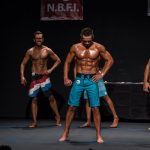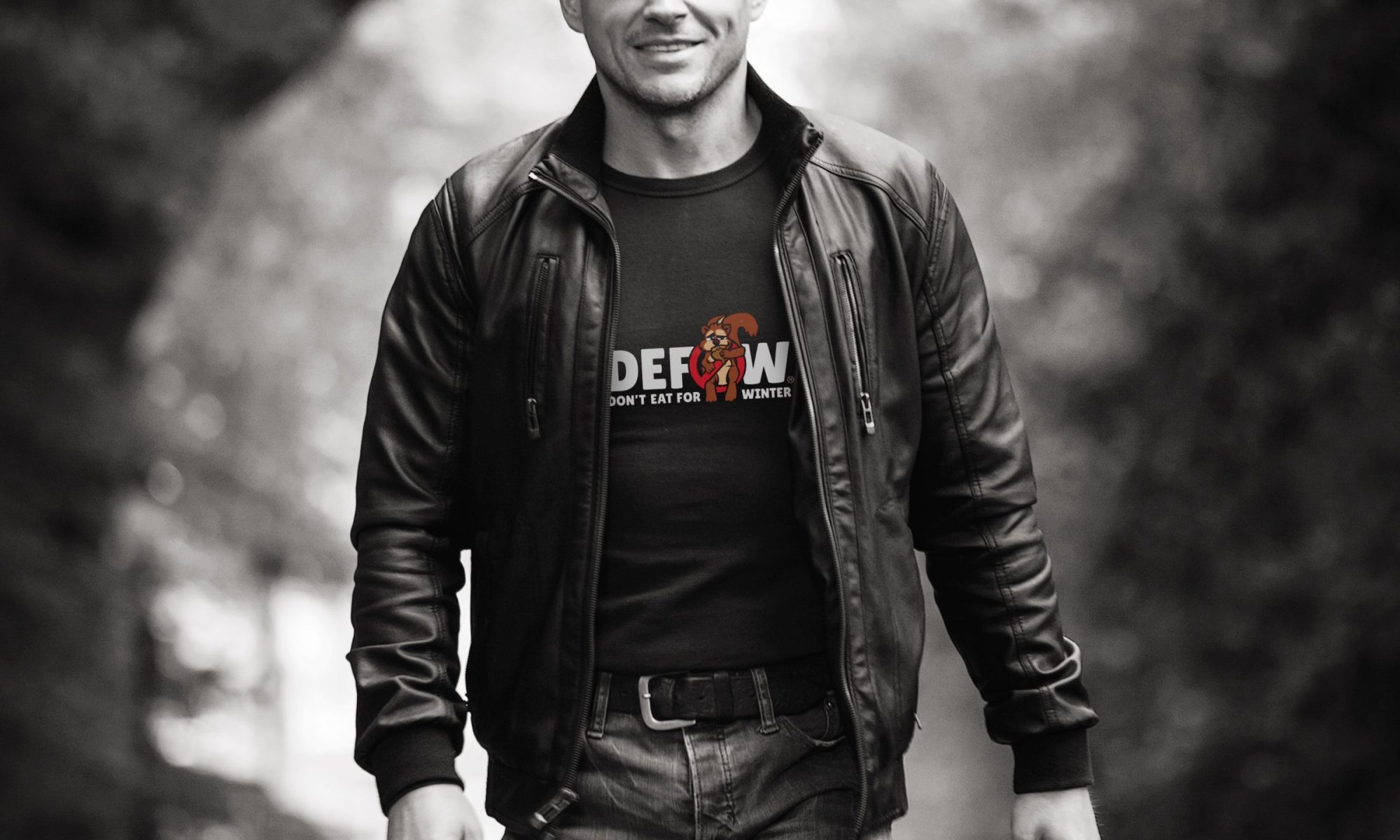The foods below are a list of generic foods (non-branded) taken from the USDA Food Database.
The are scored based on their distance from the Squirrel Formula of 53% fat 41% carb and 6% protein, which is the signature of nature’s most autumnal food. The Acorn.
The Acorn, is therefore, listed no 1. As you can see there is a large quantity of junk foods matching this formula very specifically.
Though not all of the foods below are ultra-processed, a recent, which backs up this concept, showing that eating ultra processed foods cause us to eat 500 more calories per day.
Interestingly, in this study, the extra calories were made up of more high energy fat and carb type foods, with very little protein sought.
I believe foods, such as these, cause us to want to eat more of the same and traditionally helped us prepare for winter. Nowadays, we eat them everyday so we prepare our bodies for a winter that never comes.
| Position | Food Item | Proximity to Squirrel Formula |
| 1 | Nuts, acorns, raw | 1 |
| 2 | Ice creams, regular, low carbohydrate, vanilla | 0.99 |
| 3 | Candies, carob, unsweetened | 0.99 |
| 4 | Snacks, potato chips, barbecue-flavor | 0.99 |
| 5 | Candies, milk chocolate coated coffee beans | 0.98 |
| 6 | Danish pastry, nut (includes almond, raisin nut, cinnamon nut) | 0.98 |
| 7 | Pie crust, standard-type, dry mix, prepared, baked | 0.98 |
| 8 | Nuts, acorn flour, full fat | 0.98 |
| 9 | Pie crust, standard-type, dry mix | 0.98 |
| 10 | Noodles, chinese, chow mein | 0.98 |
| 11 | Milk, human, mature, fluid | 0.98 |
| 12 | Candies, crispy bar with peanut butter filling | 0.98 |
| 13 | Whipped topping, frozen, low fat | 0.98 |
| 14 | Popcorn, microwave, regular (butter) flavor, made with palm oil | 0.98 |
| 15 | Snacks, popcorn, microwave, regular (butter) flavor, made with partially hydrogenated oil | 0.98 |
| 16 | Snacks, corn-based, extruded, chips, barbecue-flavor | 0.98 |
| 17 | Snacks, corn-based, extruded, chips, barbecue-flavor, made with enriched masa flour | 0.98 |
| 18 | Cookies, brownies, prepared from recipe | 0.98 |
| 19 | Granola bar, soft, milk chocolate coated, peanut butter | 0.98 |
| 20 | Restaurant, Latino, bunuelos (fried yeast bread) | 0.98 |
| 21 | Snacks, potato chips, sour-cream-and-onion-flavor | 0.98 |
| 22 | Candies, milk chocolate, with almonds | 0.97 |
| 23 | Spices, mace, ground | 0.97 |
| 24 | Pie crust, standard-type, frozen, ready-to-bake, enriched | 0.97 |
| 25 | Ice creams, french vanilla, soft-serve | 0.97 |
| 26 | Doughnuts, yeast-leavened, glazed, unenriched (includes honey buns) | 0.97 |
| 27 | Frozen novelties, ice cream type, chocolate or caramel covered, with nuts | 0.97 |
| 28 | Snacks, corn-based, extruded, cones, nacho-flavor | 0.97 |
| 29 | Snacks, popcorn, cheese-flavor | 0.97 |
| 30 | Pie crust, deep dish, frozen, unbaked, made with enriched flour | 0.97 |
| 31 | Snacks, corn-based, extruded, chips, unsalted | 0.97 |
| 32 | Soup, cream of celery, canned, prepared with equal volume water | 0.97 |
| 33 | Fast foods, nachos, with cinnamon and sugar | 0.97 |
| 34 | Snacks, potato sticks | 0.97 |
| 35 | Soup, cream of celery, canned, condensed | 0.97 |
| 36 | Pie crust, deep dish, frozen, baked, made with enriched flour | 0.97 |
| 37 | Nuts, almond paste | 0.97 |
| 38 | Snacks, potato chips, plain, made with partially hydrogenated soybean oil, salted | 0.97 |
| 39 | Snacks, potato chips, plain, made with partially hydrogenated soybean oil, unsalted | 0.97 |
| 40 | Snacks, potato chips, plain, unsalted | 0.97 |
| 41 | Pinon Nuts, roasted (Navajo) | 0.97 |
| 42 | Doughnuts, cake-type, plain (includes unsugared, old-fashioned) | 0.97 |
| 43 | Snacks, granola bars, soft, coated, milk chocolate coating, peanut butter | 0.97 |
| 44 | Coffeecake, cinnamon with crumb topping, commercially prepared, enriched | 0.96 |
| 45 | Coffeecake, cinnamon with crumb topping, commercially prepared, unenriched | 0.96 |
| 46 | Noodles, flat, crunchy, Chinese restaurant | 0.96 |
| 47 | Pie, chocolate mousse, prepared from mix, no-bake type | 0.96 |
| 48 | Candies, milk chocolate | 0.96 |
| 49 | Danish pastry, cinnamon, enriched | 0.96 |
| 50 | Danish pastry, cinnamon, unenriched | 0.96 |
| 51 | Candies, dark chocolate coated coffee beans | 0.96 |
| 52 | Candies, white chocolate | 0.96 |
| 53 | Candies, milk chocolate, with rice cereal | 0.96 |
| 54 | Pie crust, standard-type, frozen, ready-to-bake, enriched, baked | 0.96 |
| 55 | Snacks, corn-based, extruded, puffs or twists, cheese-flavor, unenriched | 0.96 |
| 56 | Onion rings, breaded, par fried, frozen, prepared, heated in oven | 0.96 |
| 57 | Potatoes, processed, frozen, prepared | 0.96 |
| 58 | Cookies, peanut butter sandwich, special dietary | 0.96 |
| 59 | Snacks, popcorn, oil-popped, white popcorn | 0.96 |
| 60 | Fast foods, onion rings, breaded and fried | 0.95 |
| 61 | Ice creams, vanilla, rich | 0.95 |
| 62 | Ice creams, regular, low carbohydrate, chocolate | 0.95 |
| 63 | Pie, coconut cream, prepared from mix, no-bake type | 0.95 |
| 64 | Snacks, popcorn, home-prepared, oil-popped, unsalted | 0.95 |
| 65 | Doughnuts, yeast-leavened, with jelly filling | 0.95 |
| 66 | Keikitos (muffins), Latino bakery item | 0.95 |
| 67 | Pie crust, cookie-type, prepared from recipe, chocolate wafer, chilled | 0.95 |
| 68 | Snacks, granola bar, with coconut, chocolate coated | 0.95 |
| 69 | Snacks, potato chips, cheese-flavor | 0.95 |
| 70 | Cookies, peanut butter, refrigerated dough | 0.95 |
| 71 | Cookies, peanut butter, refrigerated dough, baked | 0.95 |
| 72 | Tomatoes, sun-dried, packed in oil, drained | 0.95 |
| 73 | Danish pastry, cheese | 0.95 |
| 74 | Snacks, potato chips, plain, salted | 0.95 |
| 75 | Snacks, potato chips, made from dried potatoes, cheese-flavor | 0.95 |
| 76 | Snacks, potato chips, made from dried potatoes, sour-cream and onion-flavor | 0.95 |
| 77 | Pie crust, standard-type, prepared from recipe, unbaked | 0.95 |
| 78 | Ice creams, vanilla | 0.95 |
| 79 | Pie crust, standard-type, prepared from recipe, baked | 0.95 |
| 80 | Snacks, corn-based, extruded, puffs or twists, cheese-flavor | 0.94 |
| 81 | Whipped cream substitute, dietetic, made from powdered mix | 0.94 |
| 82 | Cookies, shortbread, commercially prepared, pecan | 0.94 |
| 83 | Potatoes, mashed, dehydrated, prepared from flakes without milk, whole milk and butter added | 0.94 |
| 84 | Candies, sesame crunch | 0.94 |
| 85 | Potatoes, frozen, french fried, par fried, extruded, unprepared | 0.94 |
| 86 | Fast foods, potato, baked and topped with sour cream and chives | 0.94 |
| 87 | Doughnuts, cake-type, plain, chocolate-coated or frosted | 0.94 |
| 88 | Soup, cream of vegetable, dry, powder | 0.94 |
| 89 | Pie crust, standard-type, frozen, ready-to-bake, unenriched | 0.94 |
| 90 | Cookies, chocolate chip, prepared from recipe, made with butter | 0.94 |
| 91 | Cream substitute, powdered | 0.94 |
| 92 | Chocolate, dark, 45- 59% cacao solids | 0.94 |
| 93 | Candies, truffles, prepared-from-recipe | 0.94 |
| 94 | Cookies, chocolate chip, prepared from recipe, made with margarine | 0.94 |
| 95 | Chocolate, dark, 60-69% cacao solids | 0.94 |
| 96 | Alcoholic beverage, liqueur, coffee with cream, 34 proof | 0.94 |
| 97 | Doughnuts, cake-type, wheat, sugared or glazed | 0.94 |
| 98 | Spices, nutmeg, ground | 0.94 |
| 99 | Potato pancakes | 0.94 |
| 100 | Cheese, gjetost | 0.94 |
| 101 | Pie, chocolate creme, commercially prepared | 0.94 |
| 102 | Fast foods, potatoes, hashed brown | 0.93 |
| 103 | Onion rings, breaded, par fried, frozen, unprepared | 0.93 |
| 104 | Pie, vanilla cream, prepared from recipe | 0.93 |
| 105 | Side dishes, potato salad | 0.93 |
| 106 | Chocolate-flavored hazelnut spread | 0.93 |
| 107 | Dessert topping, powdered, 1.5 ounce prepared with 1/2 cup milk | 0.93 |
| 108 | Potatoes, frozen, french fried, par fried, extruded, prepared, heated in oven, without salt | 0.93 |
| 109 | Doughnuts, cake-type, plain, sugared or glazed | 0.93 |
| 110 | Snacks, tortilla chips, nacho cheese | 0.93 |
| 111 | Croissants, butter | 0.93 |
| 112 | Snack, potato chips, made from dried potatoes, plain | 0.93 |
| 113 | Fast foods, french toast sticks | 0.93 |
| 114 | Pie crust, cookie-type, prepared from recipe, vanilla wafer, chilled | 0.93 |
| 115 | Creamy dressing, made with sour cream and/or buttermilk and oil, reduced calorie, cholesterol-free | 0.93 |
| 116 | Snacks, corn-based, extruded, chips, plain | 0.93 |
| 117 | Candies, sweet chocolate | 0.92 |
| 118 | Dessert topping, powdered | 0.92 |
| 119 | Salad dressing, mayonnaise, imitation, milk cream | 0.92 |
| 120 | Puff pastry, frozen, ready-to-bake, baked | 0.92 |
| 121 | Crackers, standard snack-type, regular, low salt | 0.92 |
| 122 | Snacks, granola bars, hard, almond | 0.92 |
| 123 | Snacks, tortilla chips, nacho-flavor, made with enriched masa flour | 0.92 |
| 124 | Puff pastry, frozen, ready-to-bake | 0.92 |
| 125 | Pie, banana cream, prepared from recipe | 0.92 |
| 126 | Nuts, coconut meat, dried (desiccated), sweetened, flaked, packaged | 0.92 |
| 127 | Pie crust, refrigerated, regular, unbaked | 0.92 |
| 128 | Pie crust, refrigerated, regular, baked | 0.92 |
| 129 | Candies, milk chocolate coated peanuts | 0.92 |
| 130 | Gravy, mushroom, canned | 0.92 |
| 131 | Potato salad, home-prepared | 0.92 |
| 132 | Fast foods, coleslaw | 0.92 |
| 133 | Crackers, standard snack-type, regular | 0.92 |
| 134 | Salad dressing, buttermilk, lite | 0.92 |
| 135 | Salad dressing, ranch dressing, reduced fat | 0.92 |
| 136 | Eclairs, custard-filled with chocolate glaze, prepared from recipe | 0.92 |
| 137 | Candies, semisweet chocolate | 0.92 |
| 138 | Candies, semisweet chocolate, made with butter | 0.92 |
| 139 | Nuts, coconut meat, dried (desiccated), sweetened, flaked, canned | 0.92 |
| 140 | Soup, broccoli cheese, canned, condensed, commercial | 0.92 |
| 141 | Potatoes, hashed brown, frozen, plain, prepared | 0.92 |
| 142 | Bread stuffing, cornbread, dry mix, prepared | 0.92 |
| 143 | Crackers, cheese, low sodium | 0.92 |
| 144 | Crackers, cheese, regular | 0.92 |
| 145 | Cake, pound, commercially prepared, butter | 0.92 |
| 146 | Crackers, wheat, sandwich, with cheese filling | 0.92 |
| 147 | Crackers, cheese, sandwich-type with cheese filling | 0.92 |
| 148 | Nuts, coconut meat, dried (desiccated), sweetened, shredded | 0.92 |
| 149 | Soup, mushroom, dry, mix, prepared with water | 0.91 |
| 150 | Doughnuts, yeast-leavened, with creme filling | 0.91 |
| 151 | Snacks, corn-based, extruded, cones, plain | 0.91 |
| 152 | Soup, cream of chicken, dry, mix, prepared with water | 0.91 |
| 153 | Pie, pecan, prepared from recipe | 0.91 |
| 154 | Fast foods, potato, french fried in vegetable oil | 0.91 |
| 155 | Pie, banana cream, prepared from mix, no-bake type | 0.91 |
| 156 | Cookies, peanut butter, commercially prepared, soft-type | 0.91 |
| 157 | Croissants, cheese | 0.91 |
| 158 | Candies, confectioner’s coating, yogurt | 0.91 |
| 159 | Sweet rolls, cheese | 0.91 |
| 160 | Soup, cream of mushroom, low sodium, ready-to-serve, canned | 0.91 |
| 161 | Fast foods, danish pastry, cheese | 0.91 |
| 162 | Snacks, sesame sticks, wheat-based, salted | 0.91 |
| 163 | Snacks, sesame sticks, wheat-based, unsalted | 0.91 |
| 164 | Snacks, tortilla chips, ranch-flavor | 0.91 |
| 165 | Fast foods, nachos, with cheese | 0.91 |
| 166 | Snacks, tortilla chips, taco-flavor | 0.91 |
| 167 | Ice creams, chocolate, rich | 0.91 |
| 168 | Pie, coconut custard, commercially prepared | 0.91 |
| 169 | Pastry, Pastelitos de Guava (guava pastries) | 0.91 |
| 170 | Ice creams, chocolate | 0.91 |
| 171 | Cookies, peanut butter, prepared from recipe | 0.91 |
| 172 | Danish pastry, fruit, enriched (includes apple, cinnamon, raisin, lemon, raspberry, strawberry) | 0.91 |
| 173 | Danish pastry, fruit, unenriched (includes apple, cinnamon, raisin, strawberry) | 0.91 |
| 174 | Danish pastry, lemon, unenriched | 0.91 |
| 175 | Danish pastry, raspberry, unenriched | 0.91 |
| 176 | Chocolate, dark, 70-85% cacao solids | 0.91 |
| 177 | Doughnuts, yeast-leavened, glazed, enriched (includes honey buns) | 0.91 |
| 178 | Bread stuffing, bread, dry mix, prepared | 0.91 |
| 179 | Pie, egg custard, commercially prepared | 0.91 |
| 180 | Restaurant, family style, French fries | 0.9 |
| 181 | Crackers, wheat, sandwich, with peanut butter filling | 0.9 |
| 182 | Muffins, blueberry, commercially prepared (Includes mini-muffins) | 0.9 |
| 183 | Salad dressing, home recipe, cooked | 0.9 |
| 184 | Pie, coconut creme, commercially prepared | 0.9 |
| 185 | Fast foods, griddle cake sandwich, sausage | 0.9 |
| 186 | Soup, chicken vegetable with potato and cheese, chunky, ready-to-serve | 0.9 |
| 187 | Cream puffs, prepared from recipe, shell, with custard filling | 0.9 |
| 188 | Cheesecake commercially prepared | 0.9 |
| 189 | Snacks, banana chips | 0.9 |
| 190 | Cookies, sugar, prepared from recipe, made with margarine | 0.9 |
| 191 | Crackers, cheese, sandwich-type with peanut butter filling | 0.9 |
| 192 | Potatoes, mashed, prepared from flakes, without milk, whole milk and margarine | 0.9 |
| 193 | Cookies, peanut butter, commercially prepared, regular | 0.9 |
| 194 | Snacks, plantain chips, salted | 0.9 |
| 195 | Salad dressing, thousand island dressing, reduced fat | 0.9 |
| 196 | Candies, praline, prepared-from-recipe | 0.9 |
| 197 | Snacks, granola bars, soft, coated, milk chocolate coating, chocolate chip | 0.9 |
| 198 | Coffee, dry, powder, with whitener, reduced calorie | 0.9 |
| 199 | Snacks, popcorn, oil-popped, microwave, regular flavor | 0.9 |
| 200 | Crackers, standard snack-type, sandwich, with peanut butter filling | 0.9 |
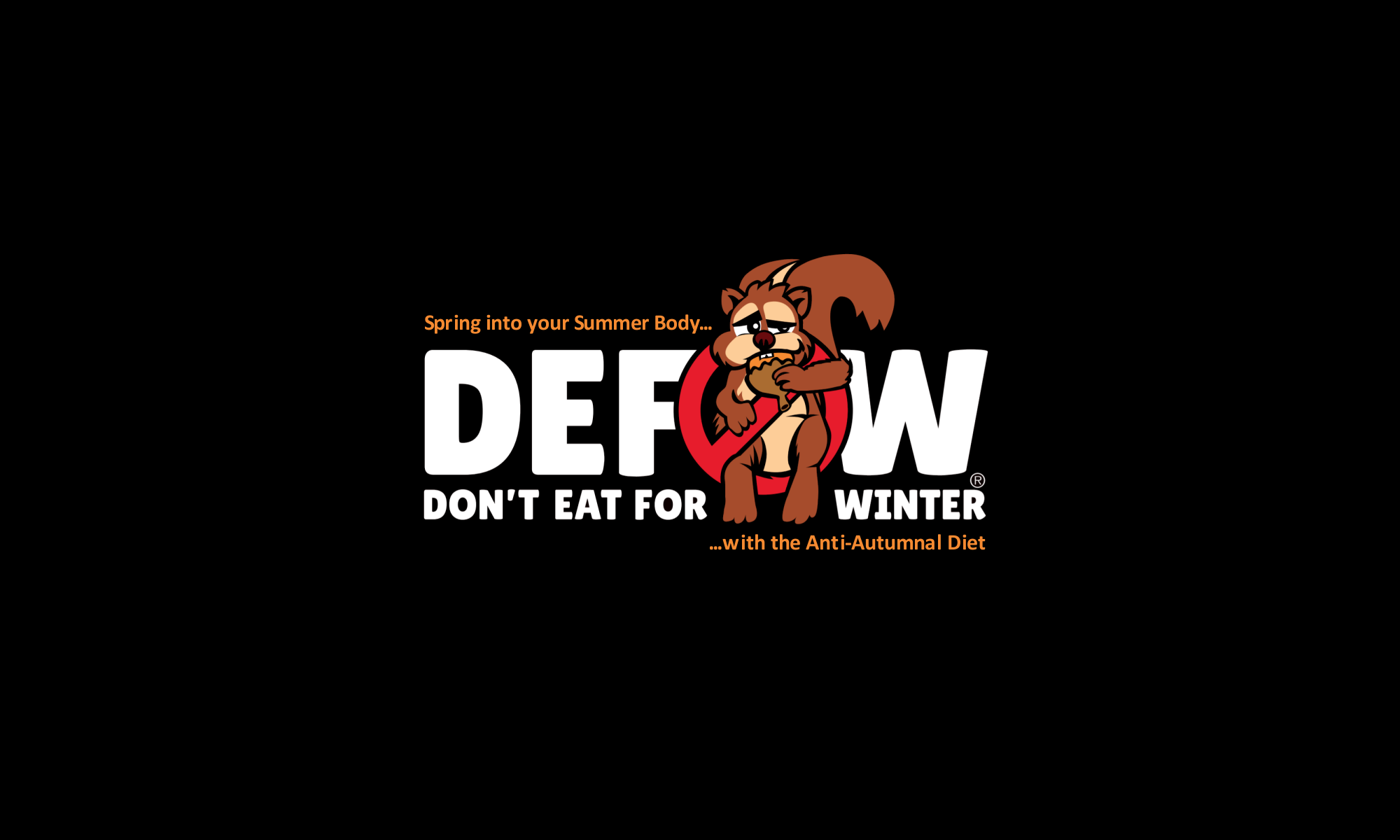
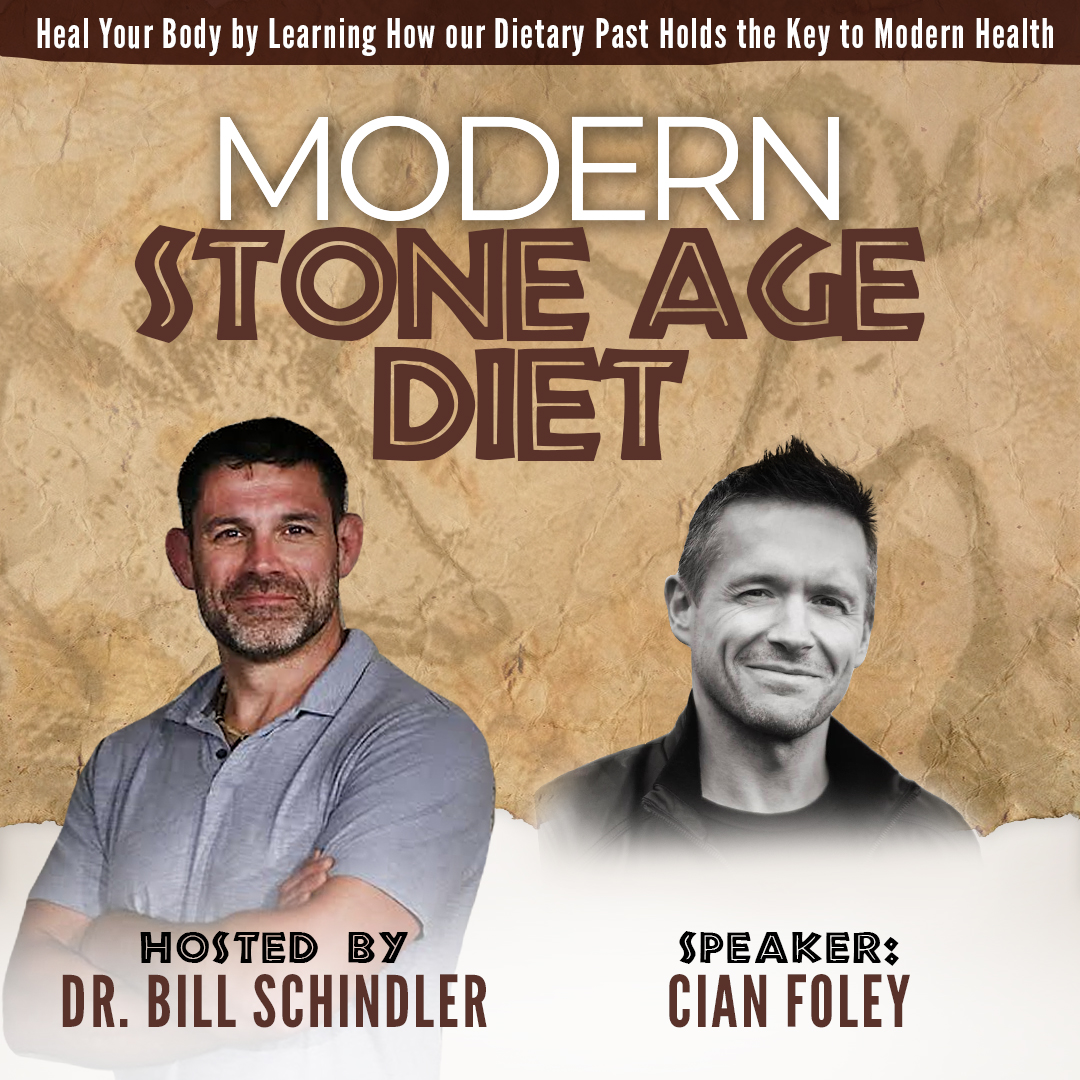
 My discussion focusses on Palaeolithic style nutrition with a seasonal twist i.e. avoid autumnal eating to prevent your body from piling on weight for a winter that never comes and is scheduled for
My discussion focusses on Palaeolithic style nutrition with a seasonal twist i.e. avoid autumnal eating to prevent your body from piling on weight for a winter that never comes and is scheduled for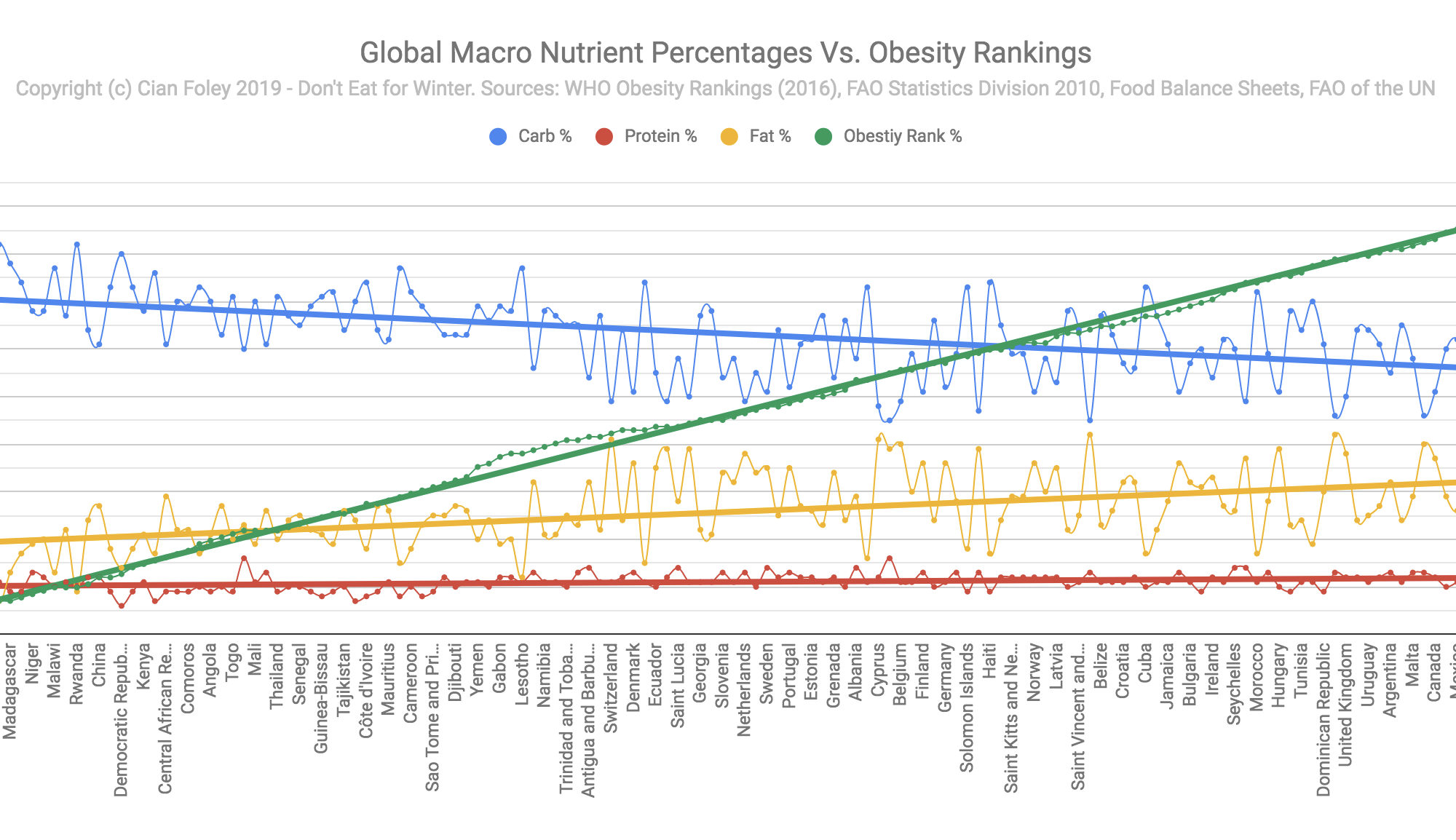
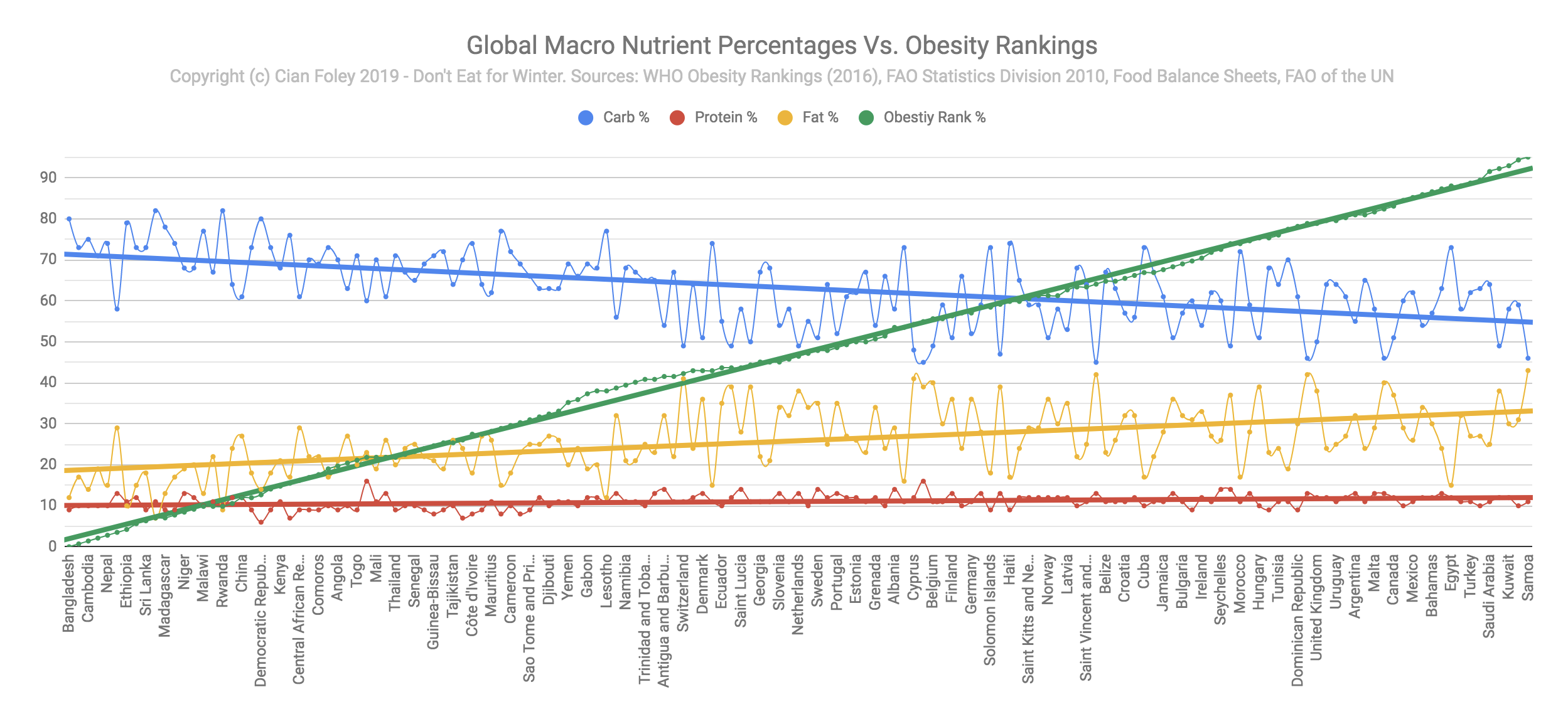
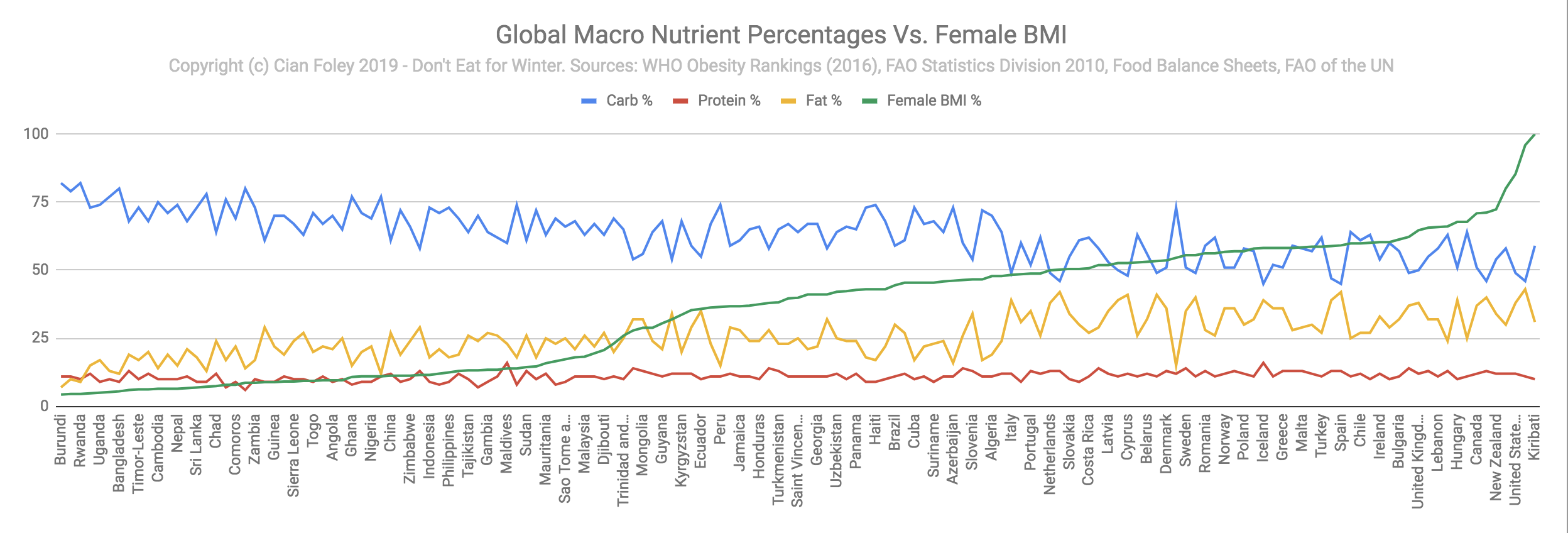
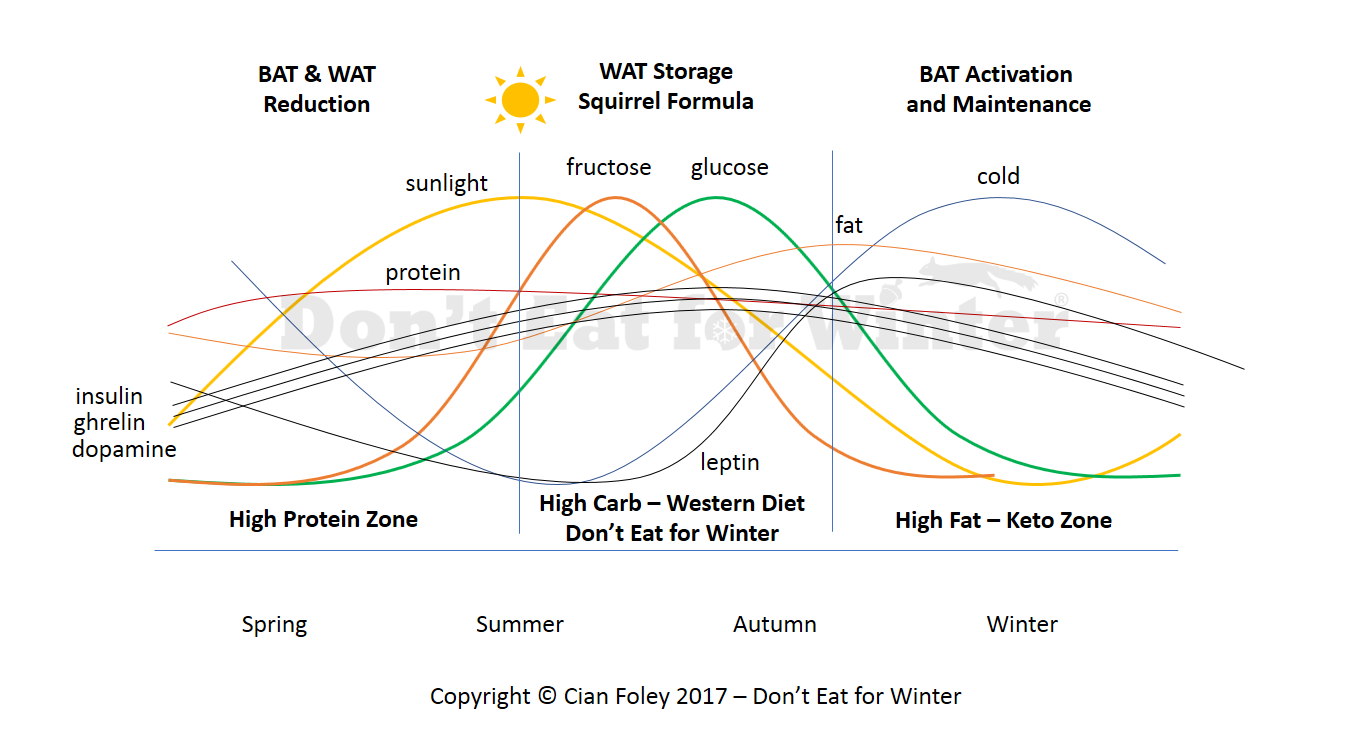
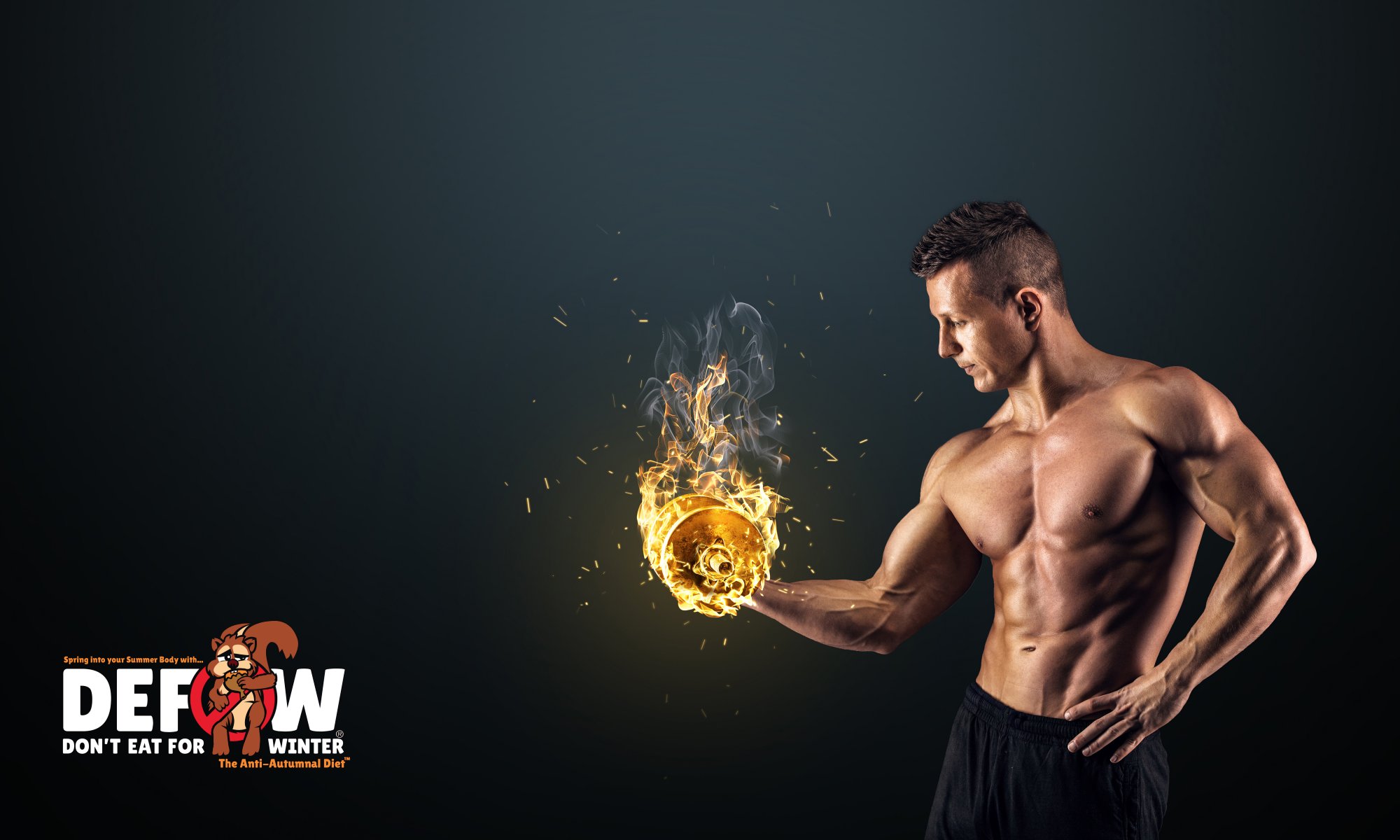
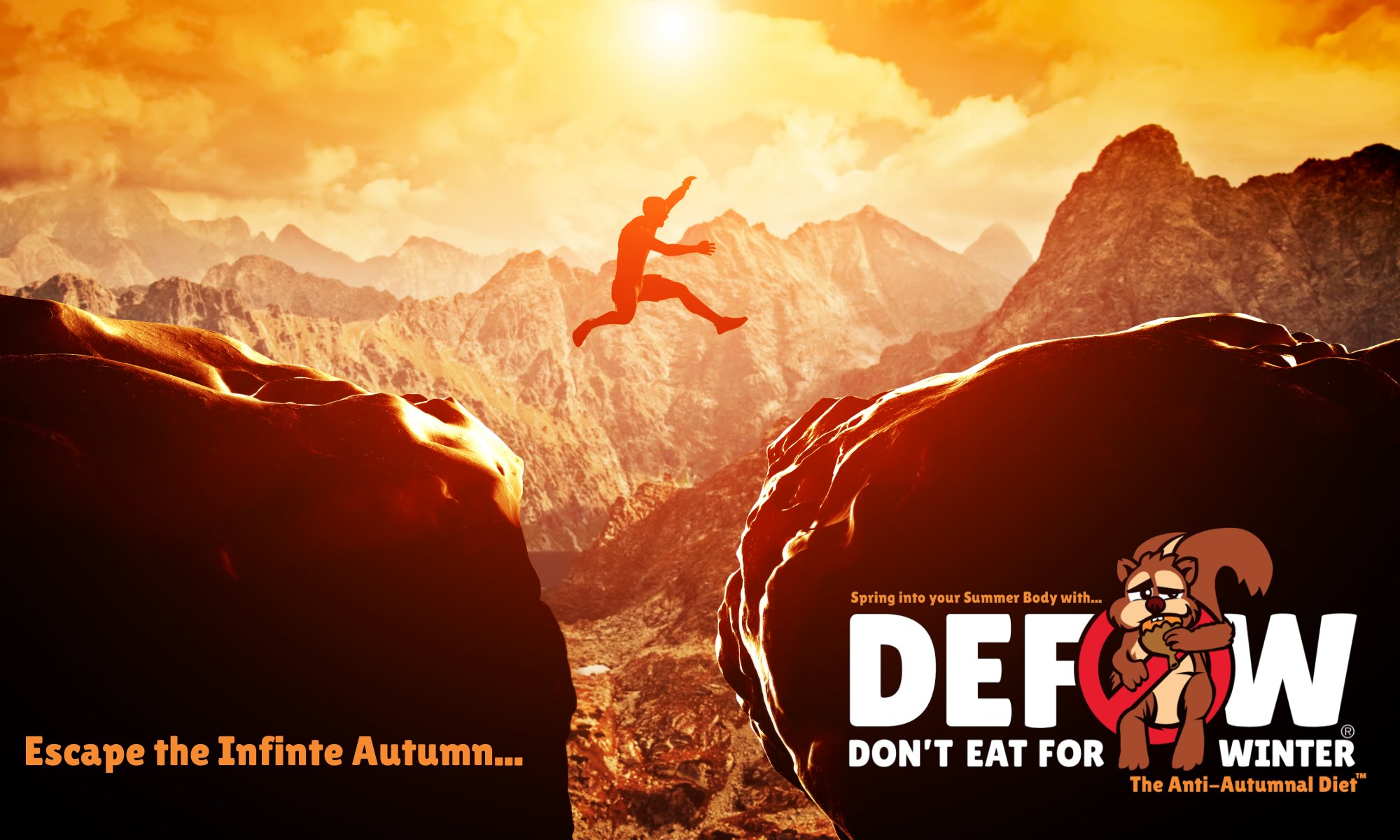
 6 years ago, I was trapped in a body that I knew I did not belong in. I had to do something about it, but didn’t know what to do. I was confused by all of the mixed messages from experts, many of whom based their advice on a foundation of sand (the
6 years ago, I was trapped in a body that I knew I did not belong in. I had to do something about it, but didn’t know what to do. I was confused by all of the mixed messages from experts, many of whom based their advice on a foundation of sand (the  They say “necessity is the mother of invention” and I needed change but I was baffled with all the conflicting messages out there. The most success I had on any diet was a paleolithic style diet, but I still got stuck at a point. I had a Eureka moment one day and realised that carbs spike in nature in late summer and autumn yet we eat them all day every day in the western diet, and I thought, “this has to have something to do with the obesity crisis we’re in”. I started eating an anti-autumnal diet that I created myself, and the weight I was carrying literally melted off after years of holding onto it even while competing internationally for Ireland with kettlebells, and, training like a demon.
They say “necessity is the mother of invention” and I needed change but I was baffled with all the conflicting messages out there. The most success I had on any diet was a paleolithic style diet, but I still got stuck at a point. I had a Eureka moment one day and realised that carbs spike in nature in late summer and autumn yet we eat them all day every day in the western diet, and I thought, “this has to have something to do with the obesity crisis we’re in”. I started eating an anti-autumnal diet that I created myself, and the weight I was carrying literally melted off after years of holding onto it even while competing internationally for Ireland with kettlebells, and, training like a demon. and full of energy, I’m 40 next year and have been more or less above 100kg with an obese BMI since I was probably 16.
and full of energy, I’m 40 next year and have been more or less above 100kg with an obese BMI since I was probably 16.








